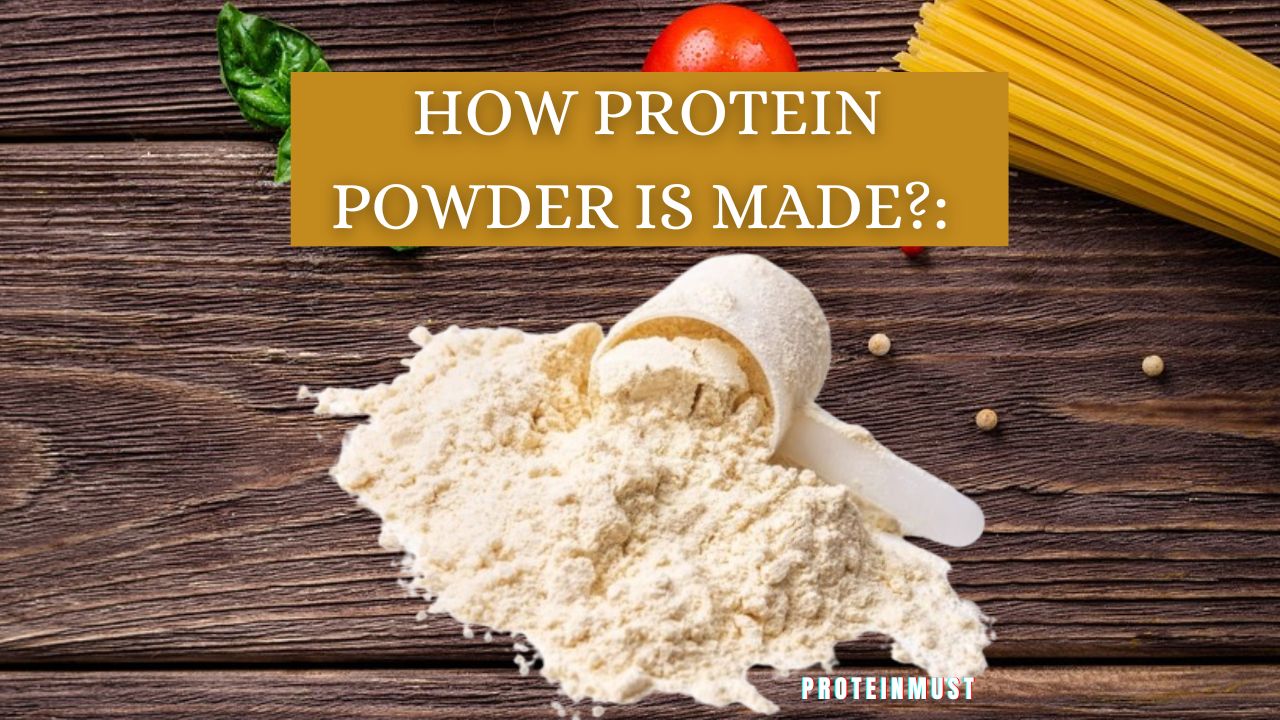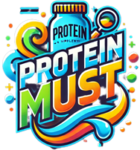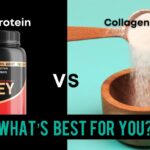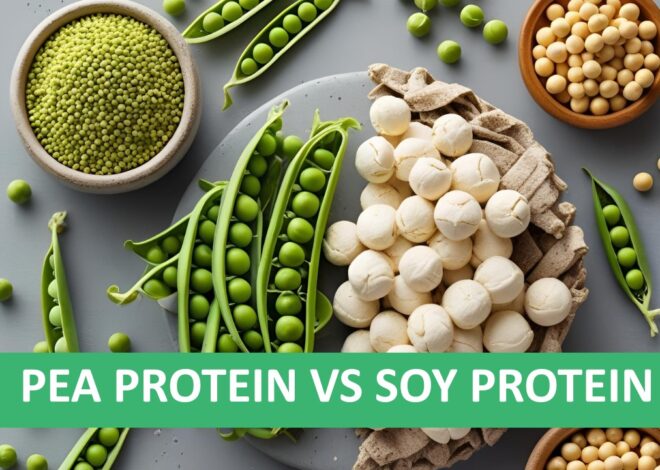
How Protein Powder Is Made: Secrets You Need to Know
Have you ever wondered what makes some protein powders healthier, tasty, or even more expensive than others? The process of making them starts with carefully selected ingredients, designed to fit different diet goals. Some are cheaper and low-quality, while others are higher-quality and loaded with essential amino acids to support your health.
As a fitness enthusiast, I know the importance of finding suitable options for specific needs, such as vegan diets or staying fuller for longer. From concentrated powders to those for specific health goals, the market offers a variety. Learning to mix the right flavors or improve the taste can make your experience even better. Also read Protein Mixes You’ve Never Tried
How Protein Powder is made-A complete Guide
If staying fit is your goal, chances are you’re already incorporating protein powder into your diet. However, not all protein powders are the same. They vary widely in composition and benefits. Some are highly concentrated, packing more protein per serving, while others are rich in essential amino acids that your body can’t produce on its own. Certain protein powders are formulated to keep you feeling fuller for longer, making them ideal for appetite control. Additionally, many options cater specifically to dietary preferences, including vegan-friendly alternatives. This variety means that choosing the right protein powder isn’t as straightforward as it might seem. Understanding these differences can help you select a product that aligns with your fitness goals and lifestyle. Whether you’re looking to build muscle, recover faster, or simply maintain your health, the type of protein powder you choose can make a significant difference
How Protein is made or extracted?
The first step in making protein powder is to extract the protein from its source. Protein can come from various sources, such as milk, plants, and even hemp. However, the most common sources remain milk and plants due to their widespread availability and efficiency.
What is Protein Powder ?
Protein powder is a supplement widely used by professional athletes and people serious about training to ensure they maintain the correct protein intake. Since muscle is built from protein, those seeking to increase muscle size and strength often prioritize a protein-rich diet.
There are 20 amino acids that act as the building blocks of muscle protein, with nine essential and 11 non-essential types. Among these, branched-chain amino acids (BCAAs) like leucine, isoleucine, and valine are especially important for muscle-building. While some protein powders include all these essential amino acids, others may not. Animal sources of protein are typically complete, offering all essential types, while plant sources are usually incomplete.
Types of Protein Powders
There are several types of protein powder, including following:
- Whey protein concentrate
- Whey protein isolate
- Casein Protein
- Plant-Based Protein Powders
Whey Protein Concentrate :
Whey protein concentrate is derived from liquid whey, a by-product of cheese-making. It is filtered to remove fats and carbohydrates, resulting in a powder that is about 70-80% protein.
Whey protein isolate:
Whey protein isolate undergoes further processing and additional filtering, removing almost all fats and carbohydrates to create a product with approximately 90% protein. These variations cater to different dietary and fitness needs.
Casein protein:
Casein protein, also derived from milk, is absorbed more slowly by the body compared to whey. This makes it a preferred choice for sustained protein release.
Plant-based protein powders
Plant-based protein powders are made from various sources like yellow split peas, hemp, rice, and soy. Hemp protein powder is particularly popular due to its high protein content and its suitability for people with lactose intolerance.
What ingredients are in protein powder?
Milk-Based and Plant-Based Proteins
Whey and casein are proteins found in milk and are the most common ingredient in protein supplements. However, these milk proteins are high in lactose, making them unfit for people with lactose intolerance. A great alternative is plant-based protein powders, made from ingredients like pea, brown rice, hemp, or chia seeds.
Artificial Sweeteners
Many large companies use artificial sweeteners to enhance the flavor of protein powders while avoiding compromising the nutritional profile. Non-nutritive sweeteners like sucralose, neotame, and aspartame are widely used and considered safe by the United States Food and Drug
Fillers
Fillers are often a sign of lower-quality products, as they are added to cut costs during the manufacturing of protein powders. For some people, these fillers may cause digestive issues like gas, bloating, or belching.
Vegetable Oils
Many protein powders also contain vegetable oils, which help improve the flavor and texture of the product. However, these oils are heavily processed and are often saturated with trans fats, one of the worst types of fat for your health.
Texture Enhancers in Protein Powders
Texture enhancers like xanthan gum or natural alternatives such as flaxseeds are used to improve the powder’s mixability and mouthfeel, ensuring a smooth and enjoyable drink. These additives are carefully selected to enhance the user experience without compromising the product’s health benefits.
Where do different types of protein powder come from?
Whey and casein
Whey and casein are two distinct protein powders, both made from pasteurised milk. Enzymes are added to make the milk curdle, separating the solid part to make cheese or casein, while the liquid whey is left behind and may be spray dried. It takes about 200 litres of milk to produce 1kg of whey protein powder, whereas the same amount of milk can produce about 6kg of casein protein powder.
Whey protein is digested quickly, while casein protein is slower to be absorbed by your body. Both whey and casein contain all nine essential amino acids, and whey protein is commonly found in some of the best protein bars available.
How is whey protein powder made?
You might think you’ve never consumed whey, but if you’ve ever opened and eaten a yogurt pot with a watery liquid floating on top, you definitely have! Whey was traditionally a waste product from the cheese-making process until businesses realized they could find a use for it.The process of making whey protein powder starts with cow’s milk, which is heated to remove bacteria. After the curd is strained, the remaining liquid becomes whey. Enzymes are introduced to separate the whey and casein, while some of the lactose and minerals are filtered out to form whey protein concentrate. The process can be taken further to filter the liquid again, removing carbohydrates and fats to create a whey protein isolate. Because whey protein has a strong, unpleasant taste, artificial additives and synthetic preservatives are often added to mask the flavor.
Egg
Made from dehydrated egg white , egg protein powder is a good option for people who have an issue with dairy protein powders like whey and casein and contains all nine essential amino acids.
How is egg white protein powder made?
The process of making egg white protein powder involves separating the whites from the yolks, pulverising them, and dehydrating the mixture. The egg whites are liquified for easy storage before being sent to a processing facility, where they can sit for days before being dried. Egg proteins are often reported to be tasteless or have bitter and unpleasant flavor’s, which is why many manufacturers add artificial flavourings, preservatives, dyes, and other additives to make the powder more palatable. While these might enhance taste, they should be avoided, as the artificial ingredients aren’t ideal for regular consumption. Egg whites are also low in essential vitamins and nutrients like Vitamin A, B2, B12, B5, D, folate, and selenium, which can be found in other protein sources.

Pea Protein Powder:
Pea protein is made from yellow split peas (not green peas, as the name might suggest!). This plant-based protein contains high levels of branched-chain amino acids and should make you feel nicely full, just like animal-derived protein powders.
How is Pea Protein Powder made?
Pea protein is a popular choice for protein powders. You might first think of the green balls in your vegan bangers and mash, but pea protein powder is actually made by extracting protein from yellow split peas. It is ideal for those with digestive issues or stomach sensitivities, as well as people following a vegan or cruelty-free diet.
The protein extraction process involves both a dry phase and a liquid phase. In the dry phase, the peas are dried and then ground into a fine powder, similar to the consistency of flour, containing protein, starch, and fibre. In the liquid phase, the powder is mixed with water to separate the fibre and starch.
Hemp Protein Powder
Hemp protein is similar to brown rice protein in that it is often viewed as an incomplete protein due to its low levels of lysine and leucine. However, hemp is rich in omega-3 fatty acids, which are typically derived from oily fish, but in this case, it comes from a non-animal source
How is Hemp Protein Powder made?
Hemp protein is derived from a variation of cannabis sativa, which is used for cosmetics, food, and fuel. It contains less than 0.3% THC, so your protein shake won’t be getting you high! Many people consider hemp to be a superfood, as it is a great source of Omega 3 and Omega 6 fatty acids, as well as minerals like potassium, phosphorus, and magnesium.
To make hemp protein powder, the harvested plants are carefully cleaned and dried through processes like sieving, grading, and gravity separation. The seeds may pass through two different-sized sieves before being sent through a fanning mill. They are then dehulled, a process that removes the seeds’ outer shells. The next step is extracting the hemp oil, leaving a byproduct called hemp cake or hemp meal, which forms the base for your hemp powder.

Brown Rice Protein Powder
Brown rice protein is a plant-based option but is low in lysine, so even though it contains all nine essential amino acids, it’s not considered a complete protein. However, it is a great choice for those with dietary sensitivities, especially for people who are allergic to dairy, eggs, or legumes.

How is Brown Rice Protein Powder is made?
Brown rice protein powder is made by extracting protein from whole-grain brown rice while preserving its nutritional value. The process begins with cleaning the rice to remove impurities and milling it into a fine flour. This flour is then treated with natural enzymes, which break down the starch and separate the protein from the carbohydrates. The protein-rich liquid is filtered to remove any remaining non-protein components, ensuring a pure concentrate. This concentrate is dried using low-temperature methods, such as spray drying, to maintain its nutritional integrity while converting it into a fine powder. Finally, the powder is packaged in airtight containers to preserve freshness. The result is a vegan-friendly, nutrient-rich protein powder suitable for various dietary needs.
Soy
Although soy is a plant product – classified as a legume – it also contains all nine essential amino acids and is considered to be a complete protein. However, soy is a crop that has gained a reputation for being heavily sprayed with pesticides in some countries, so you may prefer to look for an organic soy protein powder.
How is Soy Protein Powder made?
Soy protein powder is made through a series of steps to extract and purify protein from soybeans. The process starts with harvesting and cleaning the soybeans to remove dirt and impurities. Next, the beans are dehulled, and the oil is extracted, leaving behind defatted soybean flakes rich in protein. These flakes are mixed with water or an alcohol solution to extract the protein, separating it from carbohydrates and fiber. The protein is then precipitated by adjusting the pH, filtered to remove remaining impurities, and spray-dried into a fine powder. Depending on the process, this results in soy protein concentrate (70% protein) or isolate (90% protein). Finally, the powder may be flavored before packaging for sale.
The Process of Making Protein Powder
Raw Material Selection
Protein powders begin their journey with the selection of high-quality raw materials. Depending on the type of protein, this could be yellow split peas for pea protein, dairy milk for whey and casein, or soybeans for soy protein. The choice of raw material significantly influences the protein’s nutritional profile and digestibility. It also plays a key role in deciding the flavor the powder will have.

Extraction and Isolation:
The next step in protein powder production involves extracting and isolating the protein from the raw materials. For plant-based proteins like pea or soy, this process includes a dry phase of grinding the raw material into a fine powder, followed by a liquid phase for separating unwanted components. Animal-based proteins, such as whey, begin with heating milk to remove bacteria, followed by straining and enzyme treatment to isolate the protein.
Concentration and Purification
After extraction, the protein undergoes concentration and purification processes. For whey protein, this means filtering out lactose and fats. In the case of plant proteins, further steps are taken to remove substances like fiber and starch, ensuring a high protein concentration. These steps are crucial for enhancing the protein’s nutritional value and making sure it’s suitable for different kinds of diets.
Drying and Pulverizing
Once the protein is concentrated, it undergoes drying and pulverizing to form a fine powder. This step ensures the right texture and solubility, making it easy to mix with liquids. The drying process is carefully controlled to maintain the protein’s integrity and nutritional quality.
Quality Checks
Finally, thorough quality checks are carried out to ensure the protein powder meets health and safety standards. This includes testing for protein content, purity, and the absence of contaminants, guaranteeing a safe and effective product.
Manufacturing Process Implementation on Various Protein Types:
Here’s a simplified look at the manufacturing processes:
Milk-Based Proteins (Whey and Casein):
Separation:
For milk-based proteins like whey and casein, the process begins with separation, where milk is divided into curds (solid) and liquid whey. Whey protein is then collected from the liquid whey.

Filtering :
The liquid whey undergoes filtering to concentrate the protein. This can include techniques like microfiltration, ultrafiltration, or even ion-exchange methods.
Spray Drying
Finally, the concentrated protein liquid is subjected to spray drying to create a fine powder, completing the transformation into protein powder
Plant-Based Proteins:
Extraction
For plant-based proteins, such as those from yellow split peas, the extraction process begins by grinding the plants into a fine flour. This flour is then mixed with water to separate the protein from the fiber and starch.
Purification
Next comes the purification step, where the liquid containing the protein is purified to increase the protein content.
Drying:
Lastly, the purified protein liquid is spray dried, similar to the process used for milk-based proteins, turning it into a fine powder.
The protein powder concentration process:
As the name suggests, protein powders are made from powdered forms of protein, which can come from either an animal source like milk and eggs, or a plant source such as pea, soy, rice, and hemp. Some powders are labelled with terms like ‘soy protein concentrate’ or ‘pea protein isolate’, and these terms hold meaning regarding the processing method used to extract the protein.

To make a protein concentrate, the protein is extracted through heat or enzymes, which removes water and some minerals. This results in a powder that is about 70% to 85% pure protein, with the rest consisting of carbohydrates and fats. A protein isolate goes a step further by isolating the protein, resulting in at least 90% protein concentration. Although it has a higher concentration, protein isolate is more processed, and manufacturers can add a variety of superfoods, vitamins, minerals, herbs, sweeteners, and other additives to improve its taste and nutritional profile.
Ratio of Protein in Different Forms of Protein:
The way different types of protein powder are made has a direct effect on how much protein it actually contains. This is another example of how not all protein products are equal. The manufacturing process influences the protein concentration and the final nutritional value of the product.
Protein concentrate powders
Protein concentrate powders typically consist of 60-80% protein, with the rest made up of fats and carbohydrates. The protein is extracted from whole foods using heat and acid.
Protein isolate powders
Protein isolate powders have a higher percentage of protein, typically 90-95%, compared to concentrates. They are made from protein concentrate that has been filtered to remove most of the fats and carbohydrates. These are often a good option to mix into one of the best protein shakers after a workout.
Protein hydrolysates
The protein content of protein hydrolysates typically ranges from 73.35% to 93%, depending on the type of protein and the production process used.
Protein hydrolysates undergo an additional layer of processing, where they are heated with acid or treated with enzymes, helping them to be absorbed more quickly into the bloodstream.
How protein powder production is advancing?
Extraction and Processing technologies
Recent extraction and processing technologies have led to new, improved methods for producing protein. Cold filtration for whey protein and the use of enzymes for plant proteins make the protein purer and easier to digest. These techniques also preserve the natural nutrients and amino acids, making the protein more effective for muscle growth, repair, and overall bodily function.
Flavor and Texture improvements
Additionally, flavor and texture improvements have made protein powders more enjoyable. With new flavoring techniques and natural sweeteners, protein powders are now more palatable, and some are even drinkable, resembling a sports drink rather than a thick shake. A popular example is the Cherry Limeade Whey Protein.
Quality Control and Safety
Today, protein powders undergo stricter quality control and safety measures. These measures include testing for harmful substances, closely monitoring how the powders are made, and ensuring they meet high standards. These checks guarantee that your protein is safe to consume, effective, and made with only quality ingredients.

Takeaways:
Whether you’re an athlete, fitness enthusiast, or just someone looking for a convenient source of protein, understanding the process and ingredients behind your protein powder can make a significant difference.
The key to maximizing the benefits of protein powder is choosing the right type that fits your diet and fitness goals.
Do Different Types of Protein Powder Have Any Benefits Over Others?
Sports dietician Claire Fudge, of Fourth Discipline Nutrition, works with elite athletes to ensure their nutrition is optimal. She says different types of protein powder can serve specific needs. For example, whey protein, which is quickly absorbed, is a great choice for people who train early in the morning to fit in breakfast later. “For some of our endurance athletes, we use casein,” says Fudge. Casein is a slow-release protein, which is ideal when consumed before bed (30-40g). It helps prevent muscle breakdown overnight, working as a slow drip feed.
Fudge also mentions the rise in plant-based eating, which has increased demand for plant-based protein powders. Since single plant sources may not provide a complete range of branched-chain amino acids, she recommends choosing a plant protein powder that combines different sources. “All the different plants bring their own benefits – it’s like putting together a jigsaw puzzle,” she adds.
Things to Consider Before Choosing Your Protein Powder
Protein content and essential amino acids
When selecting a protein powder, protein content and essential amino acids are critical factors to consider. These amino acids are the building blocks of proteins that our bodies cannot produce on their own. This makes protein powders a valuable addition diets particularly for those looking to build muscle or supplement their protein intake.
Dealing with lactose intolerance
For individuals dealing with lactose intolerance, plant-based protein powders like pea protein powder and hemp protein powder are excellent alternatives. They offer high protein content without causing the digestive issues associated with lactose. Making making them a great choice for those who need to avoid dairy.
Choosing the Right Protein Source
When choosing a protein powder, it’s essential to consider your dietary needs and preferences.
Plant-based proteins
Plant-based proteins are a great option for vegans, vegetarians, and those with lactose intolerance. These options provide high-quality protein without the digestive discomfort associated with dairy.

Whey protein powder
Whey protein powder is excellent for quick absorption and muscle recovery after intense workouts.
Casein protein
Casein protein is ideal for a slow, sustained protein release, making it perfect for use before bed.
Frequently Asked Questions (FAQs):
What is protein powder made from?
Protein powder is made by extracting and concentrating protein from sources like milk (whey, casein) or plants (pea, hemp). It undergoes a drying process to create a fine powder.
What is the difference between whey and casein protein?
Whey protein is absorbed quickly by the body, making it ideal for post-workout recovery, while casein protein is absorbed slowly and is often used before bed for sustained muscle repair.
Can plant-based proteins provide all essential amino acids?
Plant-based proteins can provide essential amino acids, but some, like pea or rice protein, may need to be combined to ensure they contain the complete range of amino acids.
What are the benefits of plant-based protein powders?
Plant-based protein powders are great alternatives for vegans, vegetarians, or those with lactose intolerance. They offer high protein content without digestive issues related to dairy proteins.
Is whey protein suitable for people with lactose intolerance?
Whey protein concentrate contains lactose, which may cause digestive discomfort for people with lactose intolerance. However, whey protein isolate has minimal lactose and may be easier to digest for some individuals.
How is protein powder processed?
Protein powder is made by extracting protein from raw materials (like milk or plants), concentrating and purifying it, and then drying it to form a fine powder.
Why are some protein powders labeled as isolates or concentrates?
Protein isolates have higher protein content (90-95%) due to further filtering to remove fats and carbs, while protein concentrates typically contain 60-80% protein along with fats and carbs.
What are the advantages of choosing plant-based protein powders?
Plant-based protein powders are ideal for those with dietary restrictions or allergies to dairy, eggs, or legumes. They are also better for those who prefer cruelty-free and environmentally-friendly options.
Conclusion:
Protein powder is produced through a detailed process that extracts and concentrates protein from sources like milk or plants. This process typically involves separating the protein from other components, followed by drying to create a fine powder that’s easy to mix and consume. The type of protein used influences the final product’s nutritional profile, making it suitable for different dietary preferences and needs.
For those looking for rapid absorption and muscle recovery, whey protein is a popular choice, as it is quickly digested by the body. On the other hand, casein protein is absorbed more slowly, making it an ideal option for sustained muscle repair, often taken before bed. For individuals who follow a vegan or lactose-free diet, plant-based proteins like pea or hemp are great alternatives that offer excellent protein content without the digestive issues associated with animal-derived proteins. No matter your preference, there’s a protein powder to support your fitness and health goals.








